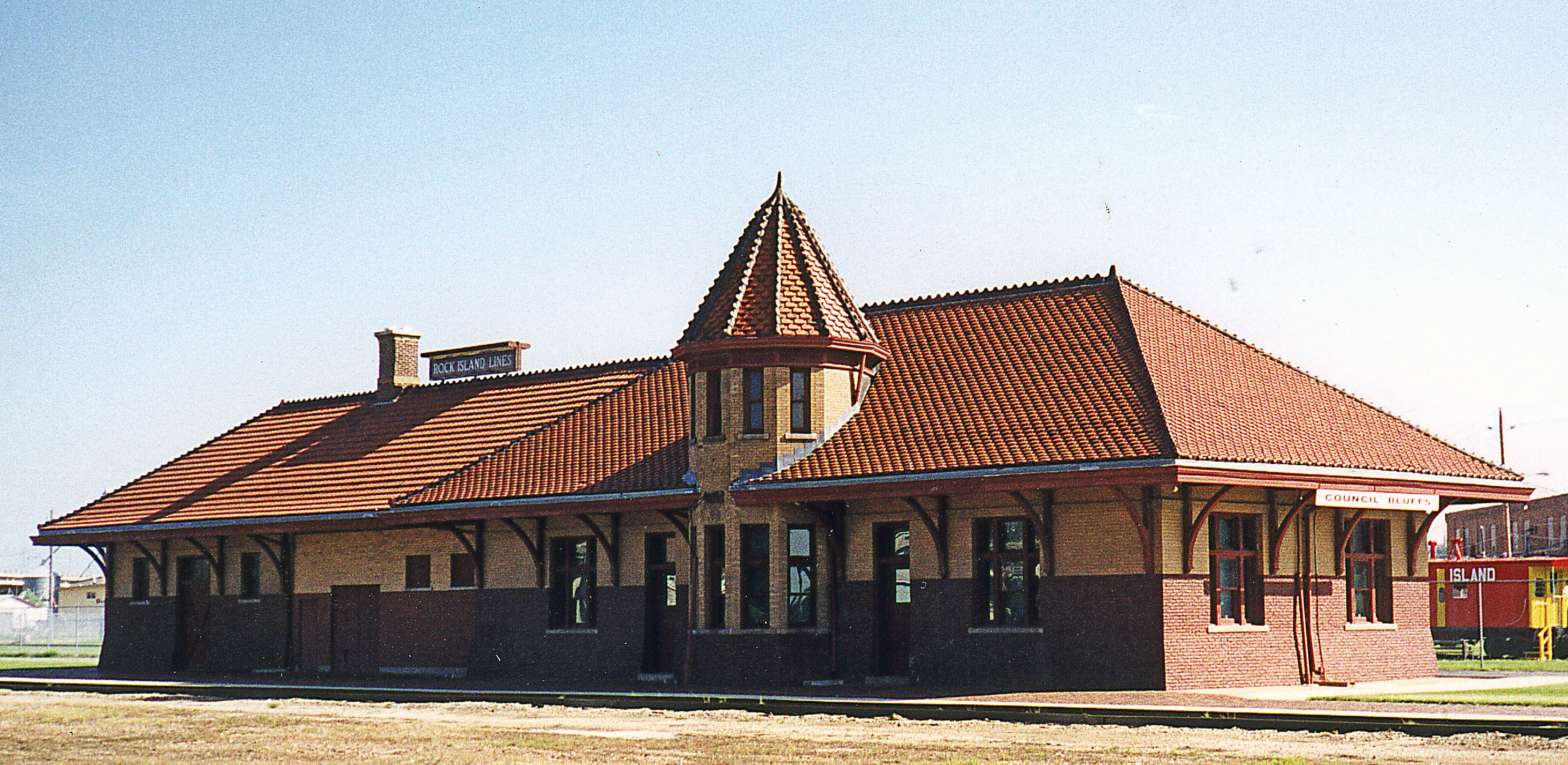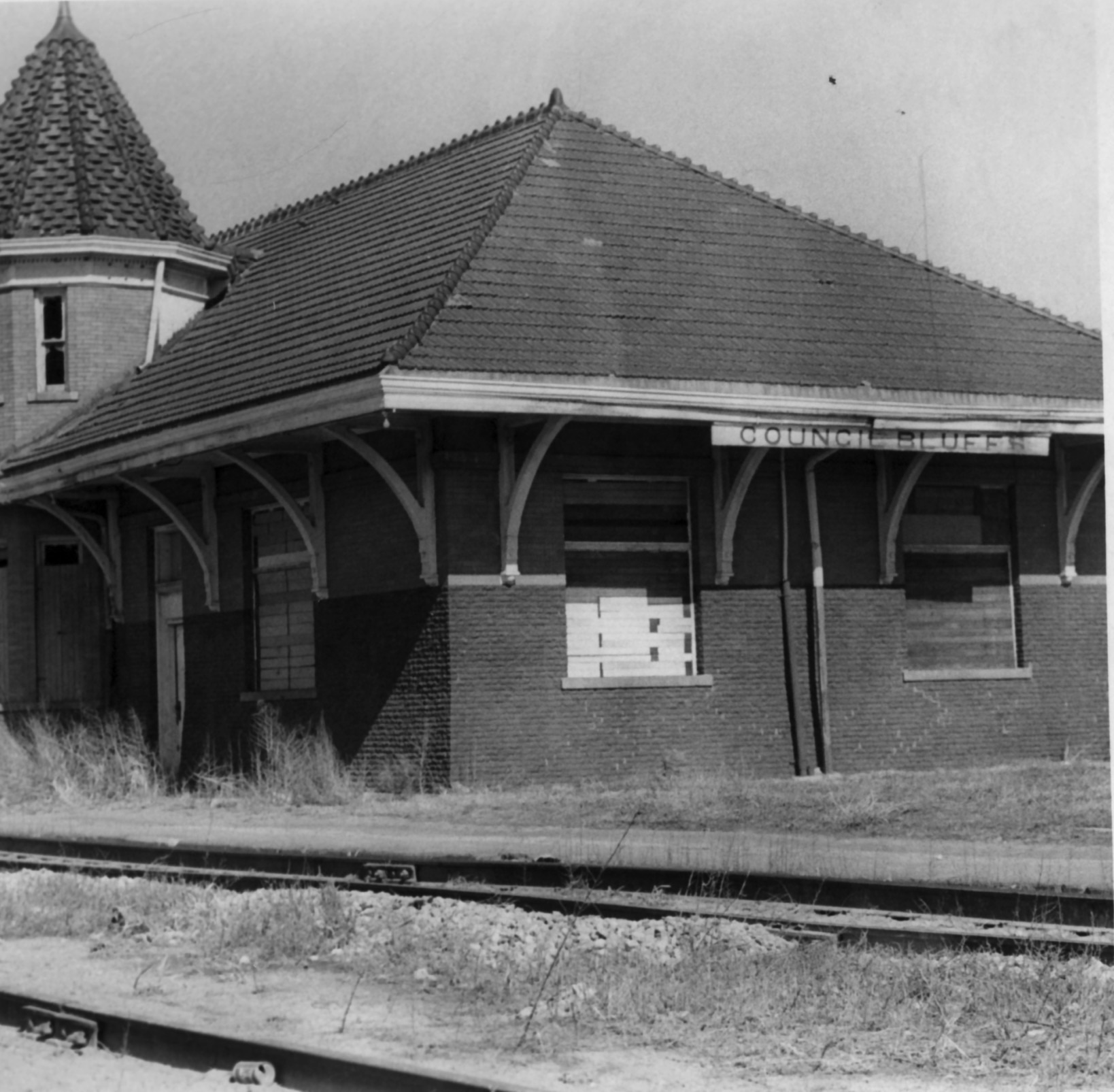Historical and Preservation Society of Pottawattamie County
County Seat Council Bluffs, Iowa








Though Council Bluffs was once known as “the city of depots” there is just one left in recognizable condition— the Chicago, Rock Island and Pacific depot, 120 years old this month.
The building wasn’t the first to serve as the city’s Rock Island passenger station. A new depot became necessary following the dramatic and quite sudden departure of the old one following a September 26, 1881 explosion that substituted a twelve foot deep crater for the one-time rail station. A box car loaded with dynamite sitting a short distance from the depot was likely ignited by a small fire started from sparks of a passing steam engine resulting in what was perhaps the biggest explosion in the city’s history. The resultant blast shattered windows downtown more than a mile away, and the depot was a total loss, as well as fifty rail cars and several nearby houses. Amaziingly there were no immediate fatalities, though a 20-year-old man suffered a serious head injury from a flying piece of a train wheel. The explosion occurred just as a crowd was leaving a memorial service for President Garfield in Bayliss Park, causing many to head south toward blast, expecting to see that the city gas works had blown up.
Following loss of the depot the Rock Island used a small frame building on South Main Street as their passenger station. As time went on city leaders began to become concerned that such a prominent entry point to the Council Bluffs appeared so lackluster. The Rock Island was given sixty days to “repair, repaint, and renovate the building” and "construct suitable wash rooms and water closets for men and women” as well as ensuring that passengers were provided adequate heating and lighting.
The railroad opted to construct an entirely new building instead on the site of the original station. The Romanesque Revival style building was constructed in the Rock Island’s standard design for their medium size depots, making it almost identical to its depot in Iowa City and similar to those in Wilton, Anita, and Atlantic, Iowa. As men were not considered proper company for females at that time owing to their propensity toward vulgar language and use of spittoons the new facility included two separate waiting rooms. Upon the depot’s opening in August, 1899 The Daily Nonpareil described the new building’s offices and men’s and women’s waiting rooms as “elaborately finished in marble tiling, the mottled enamel wall work giving the rooms a very rich appearance.” The new building featured steam heating, electric lighting, and toilet facilities “finished in white enamel and brass.”
The building has remained relatively unchanged for 120 years, the most major alteration coming in 1954 when the breezeway between the passenger station and the adjacent freight house was closed in.
From the late 1930s the depot served the Chicago, Milwaukee, Saint Paul and Pacific Railroad in addition to the Rock Island line. Passenger service at the depot came to a close in May, 1970. After that the women’s waiting room was converted to offices for the railroad and the men’s waiting room was used for freight storage. The Rock Island ended operations altogether in March, 1980 and the building sat vacant for five years. Its future was anything but secure; the Rock Island Railroad had declared bankruptcy and their Board of Trustees indicated their property at South Main Street and 16th Avenue was up for sale. Recognizing the historic value of the property, public interest grew to save it. Dick Downing, Council Bluffs Parks Director, reported to the Historical Society the city had offered $35,000 for the depot and the railroad had accepted the offer, but help would be needed with restoration. Historical Society member Steve Jensen was named chairman of the project in February, 1984, and drafted a lease with the city.
There was a lot of work to be done. Society volunteers met Saturdays to remove tile, scrape paint, remove wooden paneling, clean, and other endless chores. A $20,000 grant from the State of Iowa secured by State Representative Emil Pavich went toward plumbing, sewer work, and window repair. The Society purchased property adjoining the depot in 1987 to provide space for future rail car displays. A $20,000 gift from Iowa West Foundation helped secure a new tile roof in 1989 and the depot also got a new name: The RailsWest History Center. Early 1998 brought news the four pieces of rolling stock that had been on display in Dodge Park would be brought to the museum grounds. In a well-planned operation orchestrated by the Union Pacific that involved completely closing a section of Interstate highways 29 and 80 the Burlington Club Car, a caboose, CB&Q engine #915, and UP locomotive #814 were moved to the depot grounds to join other cars already on display. The building was added to the National Register of Historic Places in 1995.
Today the RailsWest Museum offers visitors a chance to explore information and displays about the eight major railroads that served Council Bluffs as well as climb aboard engines, cabooses, and rail cars. The museum is operated by the Historical and Preservation Society of Pottawattamie County and is open Fridays and Saturdays from 11 until 4 pm and Sundays 1 to 4 pm.